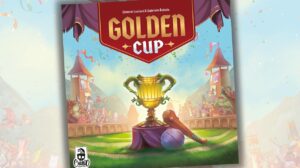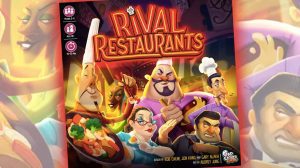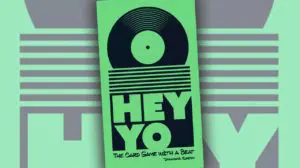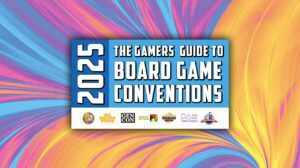The guys in my Wednesday gaming group started a push to play more of the old, dust-covered games at the bottom and backs of our respective game closet shelves. The premise was simple: let’s try to remember why we keep all these old games when all we ever play now are the newest, shiniest things in shrink.
Right on the spot, the Dusty Euro Series was born, and I’ve enlisted multiple game groups to help me lead the charge on covering older games.
In order to share some of these experiences, I’ll be writing a piece from time to time about a game that is at least 10 years old that we haven’t already reviewed here at Meeple Mountain. In that way, these articles are not reviews. These pieces will not include a detailed rules explanation or a broad introduction to each game. All you get is what you need: my brief thoughts on what I think about each game right now, based on one or two fresh plays.

San Marco: What Is It?
San Marco is an area control game for 3-4 players published back in 2001. The game was designed by Aaron Weissblum and Alan R. Moon, before Moon’s success with the Ticket to Ride series kicked off in 2004. San Marco is one of a series of well-established hits from this design pair, which includes Capitol, the 10 Days in… games, and Oasis. Weissblum also designed Celestia, a game that I’ve never tried but is well-regarded within my gaming circles.
San Marco places players as aristocrats in a Venice of the distant past, trying their best to influence various districts of the city to earn the most points at the end of three rounds of play. The game’s main mechanic is known as “I Cut, You Choose”, meaning that one player each round has control of a set of cards split between action cards and limit cards. The “Distributor” sets up the current round by splitting these cards into piles of any size, with the number of piles equal to the number of players.
Then the player to the left of the Distributor can choose a pile first. Once all piles are selected, players execute their action cards in turn order and keep their limit cards to the side of their player area. Once any player’s limit reaches 10 or more, that player’s round is over, and all other players take one final turn to end the round.
Scoring comes in two forms. One of the action cards allows the active player to score a region of their choice, ideally one that scores points for only themselves. Scoring at the end of each round is tied to the limit level differential between the lowest and highest player’s limit, which scores points for the player with a lower limit. All other scoring takes place at the end of the game, based on area majorities in each district.

Chaos is Not King
San Marco had an off night, because none of the three players who were at the table seemed to enjoy the game.
Much of that is random. One of the game’s action cards, Banishment, allows the active player to pick any district then roll a six-sided die. A player picks a location, rolls the die, and basically murders 1-6 cubes (ideally of another player color) off the map. On three separate occasions, this card’s die roll wiped all my cubes off the map. That meant I had basically wasted a majority of my round’s actions to set up an area control position on the map, only to have it all wiped away. (In two of those cases, I never even had the chance to take the Banishment card from a pile.)
A strategy game, this is not!
Because not all action cards make it into a round’s piles, we had one full round where no in-round scoring cards came out. That drove all scores down a tad. While I love the randomness that comes from not being able to plan for card selection, it left a bad taste in my mouth because of the way rounds played out, both in my favor as well as out.
San Marco has a great-looking board, some of the best bridge tokens I have ever seen in a game (from 2001 or from the present), and the card art is pretty slick. As a production from the olden times, I’m a big fan of the way San Marco looks. The gameplay left a lot to be desired.
I will need to play San Marco again, because the first play wasn’t that interesting. For some players, San Marco is a “grail game”, so I need to do more exploring to find out why!











